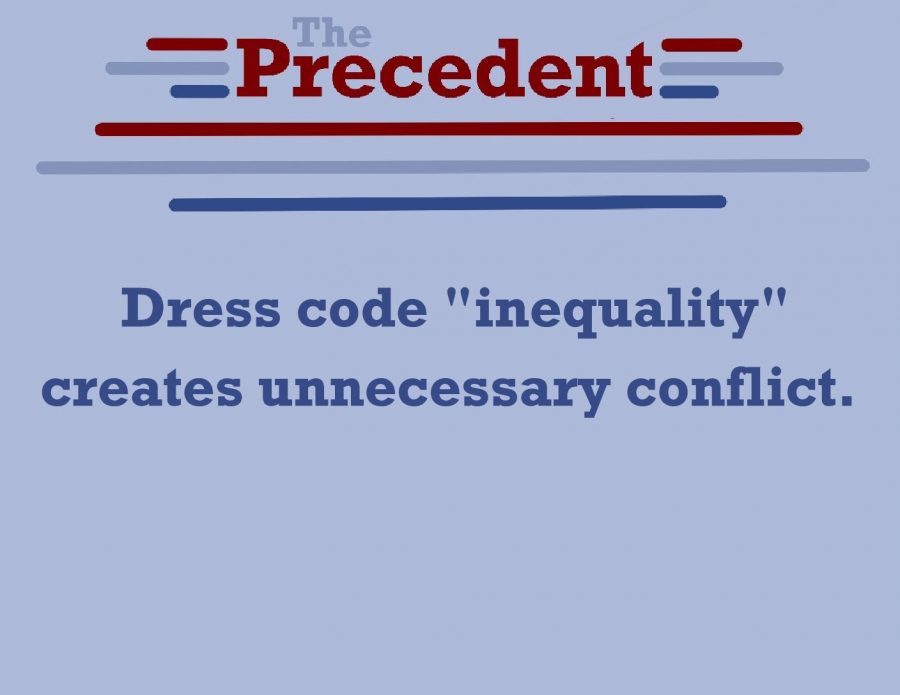Dress code “inequality” creates unnecessary conflict
Dress code is not unequal because of the school rather a community’s morals. Patterson’s restrictions on dress code creates a professional environment.
Perry is a professional high school, meaning that the rules are enforced with reason, that has won several awards for their teaching environment. Students wake up early to learn and receive a proper education from well trained adults that have graduated from excessive schooling. When a student dresses as if they are going to a weekend party it tarnishes that learning environment.
As society becomes more civilized, people have developed morals and customs: society is supposed to have decency which leads to people having to cover their body. However the female body is far different from the males, as it has different purposes and functions. The morality set around dress code is reasonable due to basic human biology.
When a girl walks into school with a mini skirt and a low cut shirt, what are her intentions? Teachers have to educate students around this girl who is dressing out of the cultural school environment making it a “distraction.”
Automatically when someone says that violating the dress code is a distraction, their brains switch to sexualizing female bodies. It is completely different. Education is mandatory and when anyone dresses away from the moral norm it is a distraction for every person. It is no different if a girl were to wear a monkey suit, the unusual situation creates a distraction. The school’s dress code is set around society’s morals, not gender inequality.
The argument that women have more to cover is reasonable. In essence, the culture that humanity has developed is unequal, not a school’s clothing policy.
The dress code is lenient enough to the point where you can express yourself through style but teachers still have to enforce it to avoid offending anyone. Violating the dress code is much more serious than what students understand. Perry holds a variety of students who have different standards. The school’s dress code accommodates every students’ morals and backgrounds.
However, dress code is not all about distractions but also improving a student’s learning. The professional environment is created by dressing appropriately. Constantly fixing a mini skirt or pulling up a shirt is moving the focus away from learning about math or science and more towards a person’s outfit.
It is obvious that the school board wants their students to wear clothes that do not annoy or bother the student. For females, the current market for modest clothing is slim; however, finding these appropriate clothes is not impossible. Getting dress coded is the student’s fault in the end.
Dress code varies on the people in the community and their morals. The sexualization of a female is not the sole purpose of dress code but to allow the students to learn in an appropriate environment with no unusual outfits. It is the students responsibility to read and abide by the dress code making it perfectly acceptable for advisors and teachers to dress code students.

Holy cow this is Presley's third time writing a description for herself; however, this year she is the managing editor (not a staff reporter)! After working...


